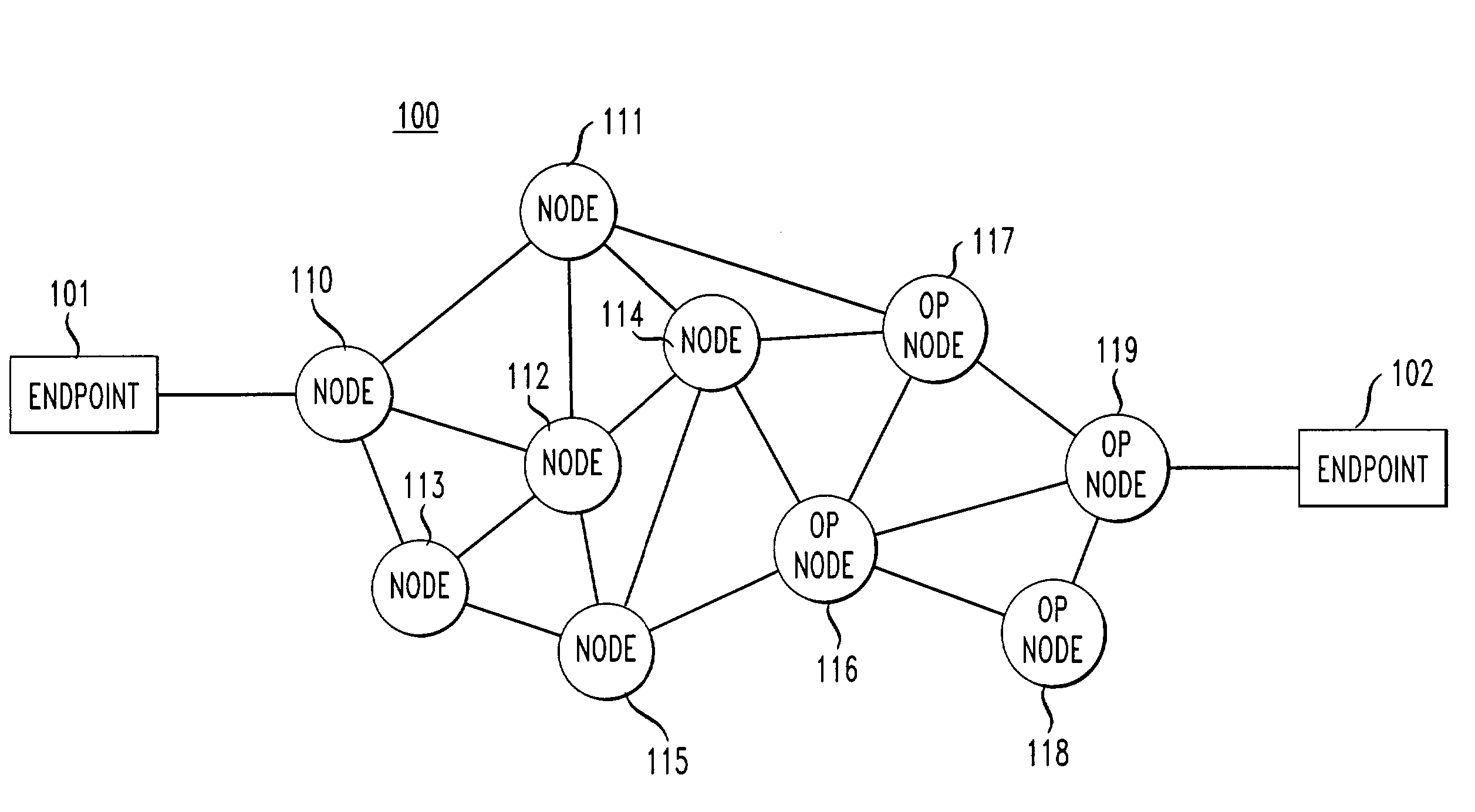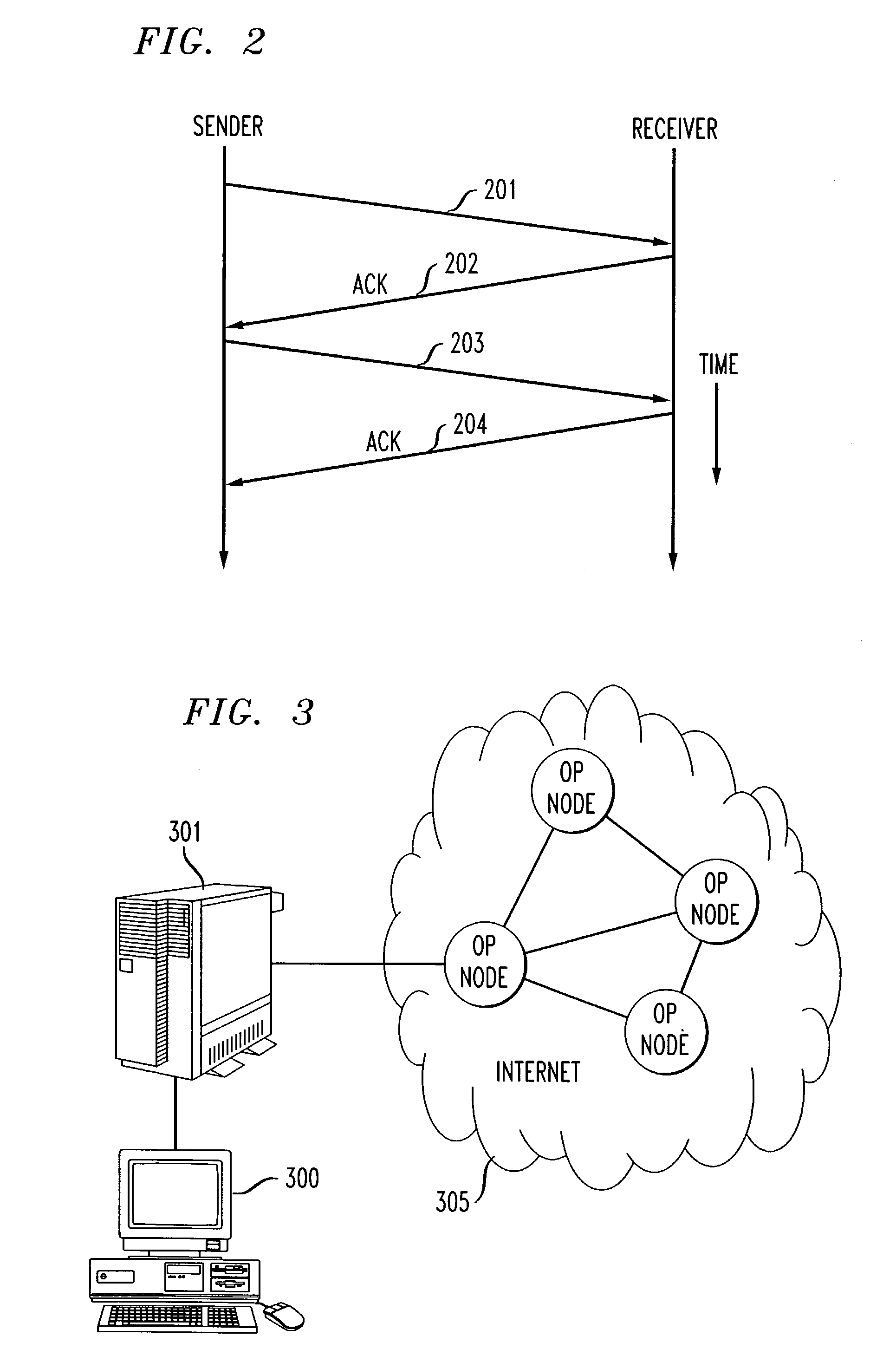Method for reducing congestion in packet-switched networks
a packet-switched network and congestion technology, applied in the field of communication networks, can solve the problems of congestion, queue overflow, packet loss, etc., and achieve the effect of avoiding network use and avoiding traffic jams
- Summary
- Abstract
- Description
- Claims
- Application Information
AI Technical Summary
Benefits of technology
Problems solved by technology
Method used
Image
Examples
Embodiment Construction
[0014]The present invention is illustrated with reference to FIG. 1 which shows a packet-switched network 100 having numerous packet-switching nodes 110 to 119 connecting endpoints 101 and 102. Endpoint 101 and nodes 110 to 115 are assumed to be under the control or supervision of a network service provider; the remainder of the network is assumed to be controlled or maintained by other providers or entities. The network service provider provides access for users to the network for an access charge. For example, where the network 100 is the Internet, an Internet Service Provider (“ISP”) such as AT&T WorldNet™ provides access to the Internet for its customers. In the case of the Internet, 110 to 115 represent routers and endpoints, 101 and 102 can be client machines, servers, proxy servers, mail servers, news servers, etc. FIG. 1, of course, is a simplification as a typical communication network would encompass other network elements that would be apparent to one of ordinary skill in...
PUM
 Login to View More
Login to View More Abstract
Description
Claims
Application Information
 Login to View More
Login to View More - R&D
- Intellectual Property
- Life Sciences
- Materials
- Tech Scout
- Unparalleled Data Quality
- Higher Quality Content
- 60% Fewer Hallucinations
Browse by: Latest US Patents, China's latest patents, Technical Efficacy Thesaurus, Application Domain, Technology Topic, Popular Technical Reports.
© 2025 PatSnap. All rights reserved.Legal|Privacy policy|Modern Slavery Act Transparency Statement|Sitemap|About US| Contact US: help@patsnap.com



